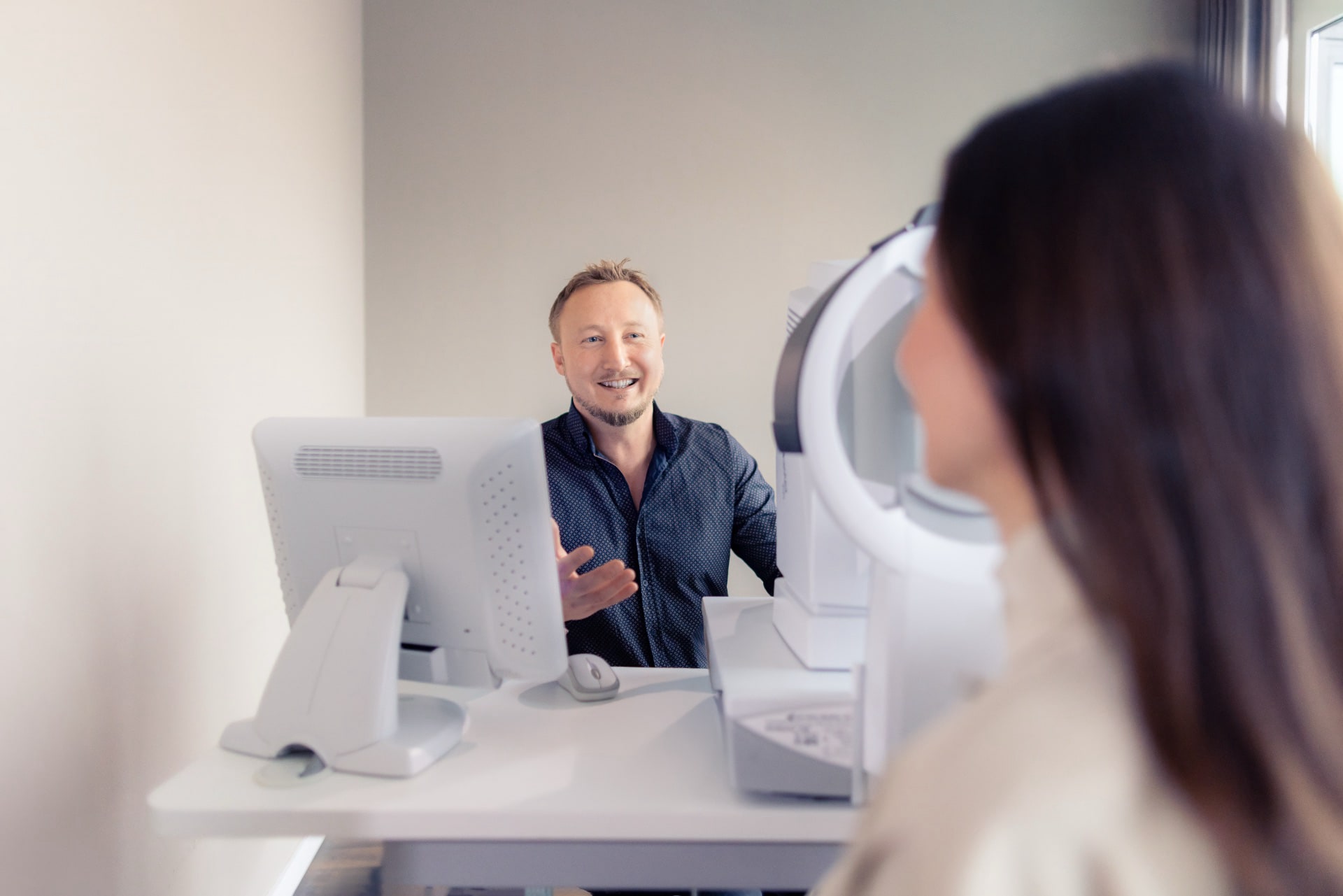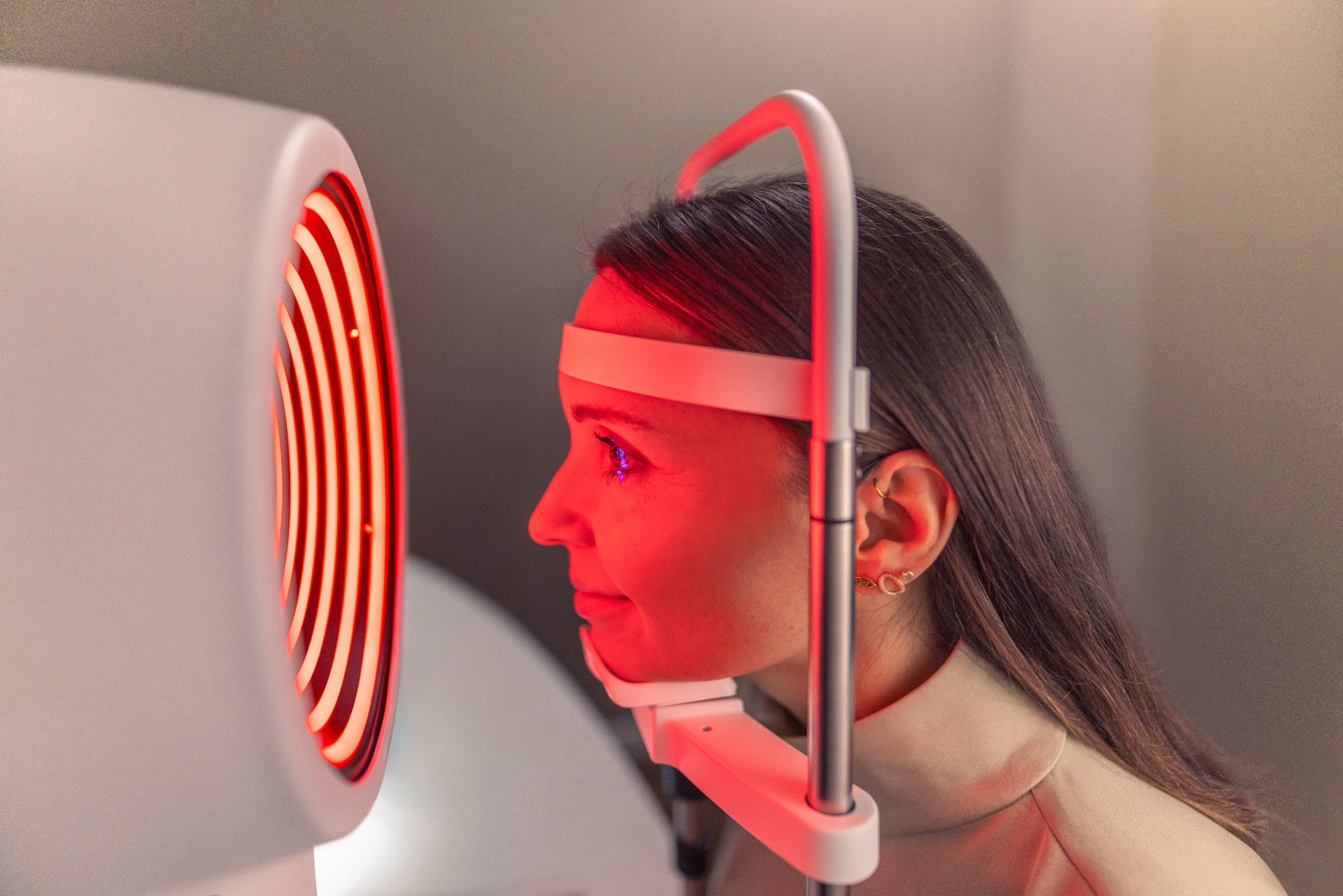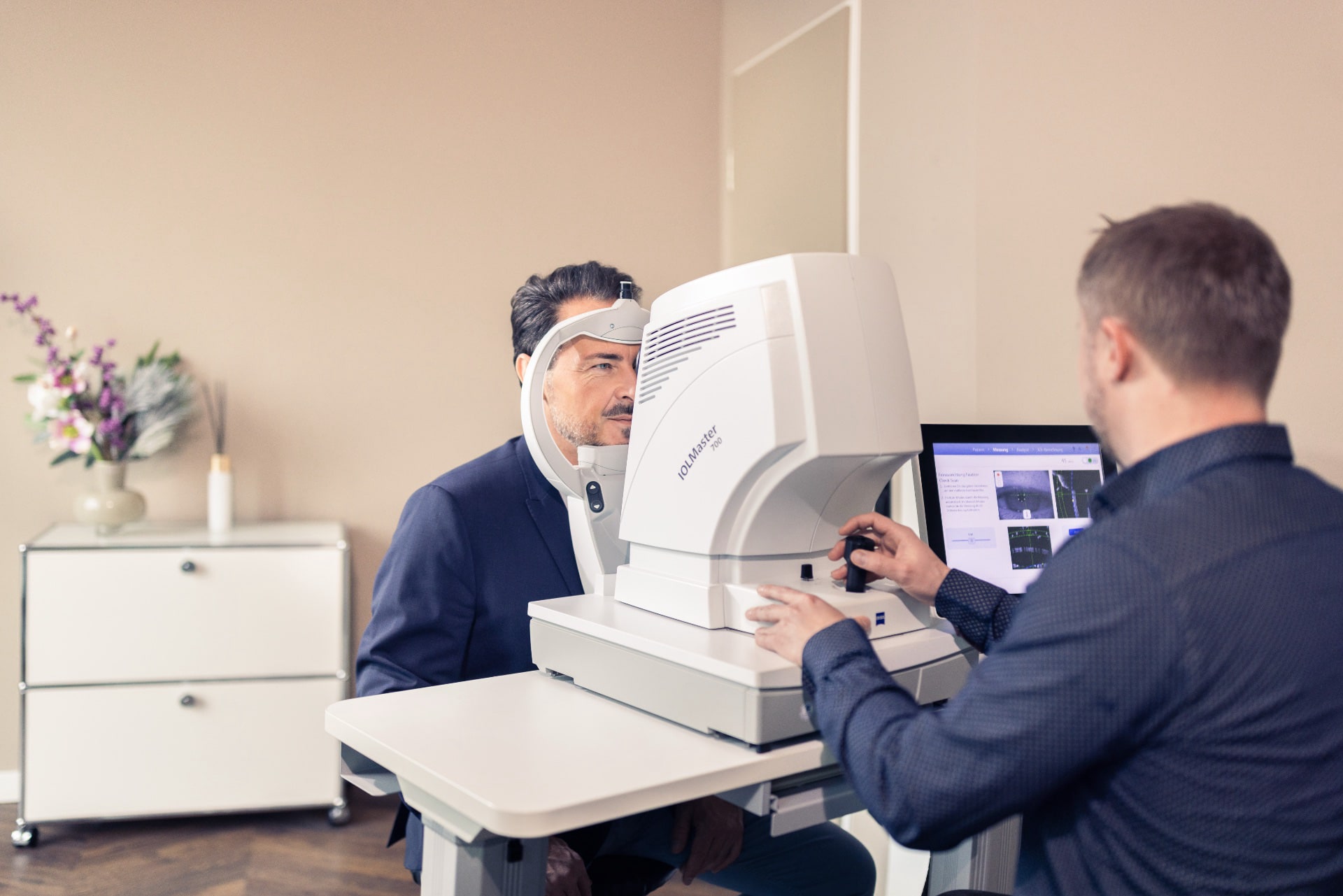Please note the following points before you come to the preliminary examination:
- Take a break of two to three weeks before the big preliminary examination.
- Plan a total of 3 to 4 hours for all examinations and the consultation.
- Do not drive to our practice yourself; have someone accompany you or pick you up, as you will not be allowed to drive for a few hours afterwards. The reason for this is that we dilate your pupils and inhibit accommodation using special eye drops to measure your visual acuity precisely. This makes you temporarily unable to see clearly until the effect has worn off.
- Important: During pregnancy and breastfeeding, neither the thorough preliminary examination nor the laser eye surgery is possible. Please come to us later.










